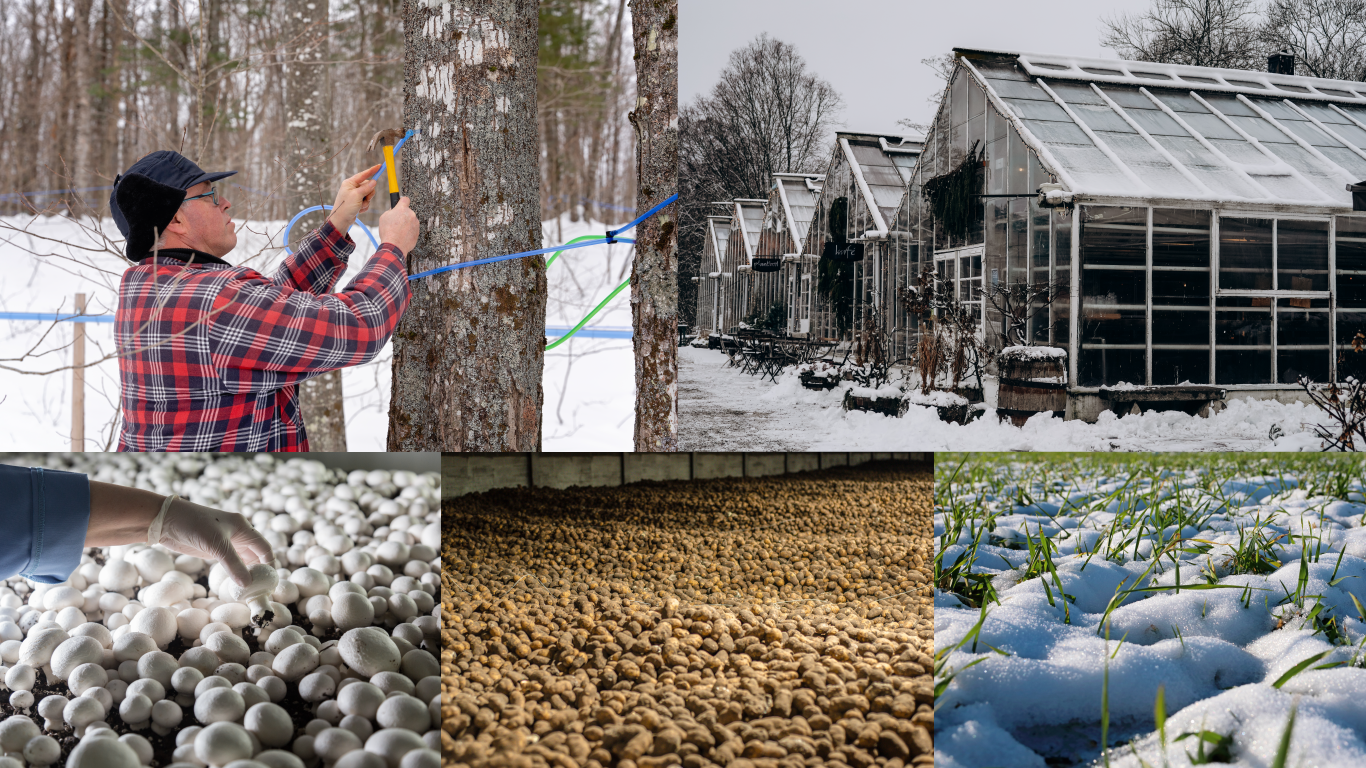
Agriculture is rarely associated with sub-zero temperatures and drifts of blowing snow in the depths of a Canadian winter. But hidden away in barns, warehouses and greenhouses, or even underneath the snow, plenty of agriculture activity is currently taking place to provide Canadians with plentiful and wholesome food year-round.
Canadians can still feast on last year’s record potato harvest
Most fresh vegetables don’t stay fresh for long, but the humble potato can be preserved for up to one year when stored properly. That’s great news because that means Canadians can still feast on the record-breaking potato bounty of 2023, when farmers produced 128.8 million hundredweight of spuds, up 4.3% from the previous record of 124 million hundredweight in 2022.
What, pray tell, is a hundredweight you may ask… 100 pounds to be exact. In other words, Canadian farmers produced 12.9 billion pounds of potatoes in 2023, equivalent to 318 pounds of potatoes for every Canadian.
Farmers rustle up more beef cattle during the winter and spring
The winter and the spring are a time of cattle renewal on Canadian farms. Cattle herd levels are generally at or near their lowest levels at the beginning of the new year.
On January 1, 2023, for example, we counted 11.3 million cattle and calves on Canadian farms. By July 1, this number had risen to 12.2 million, with almost all of the increase due to more beef cattle.
Over five in six cattle and calves counted on July 1 were beef cattle, while the remainder were dairy cattle.
Given that the dairy industry is regulated, there is very little seasonal variation in dairy cow numbers.
There were 4.5% fewer cattle and calves in Canada during the first six months of 2023 compared with the same period a year earlier. Tight supply and higher prices of cattle for slaughter contributed to the decline.
Summer tame hay keeps hunger at bay during the winter
Cows need to be fed about 2% of their body weight a day in hay or corn silage during the winter because grazing opportunities are limited by drifts of snow. Canadian farmers grew 15.6 million tonnes of tame hay and 11.7 million tonnes of corn for silage in 2023 to help keep hunger at bay this winter.
Maple trees are set to drip, will production recover from last year’s dip?
Maple farmers are already in the sugar bush, setting lines and checking equipment for this year’s maple run that will start in March, Mother Nature permitting.
In 2023, maple syrup production fell 40.1% from the record high of a year earlier to 10.4 million gallons, the lowest harvest since 2015. Weather, as always, played a key role in the annual harvest. A late winter ice storm, combined with variable temperatures, greatly lowered yield.
Last summer’s honey still tastes sweet
The bees are currently sleeping, but last summer’s honey still tastes sweet. Canada’s “working” bees made the equivalent of 73 spoonsful of sweet soothing honey for every Canadian in 2023.
Winter wheat grows beneath the snow
Approximately 10% of the wheat produced in Canada in 2023 was winter wheat, one of the rare crops that grow beneath the snow. Canadian farmers harvested 3.1 million tonnes of winter wheat in 2023, up from 2.7 million tonnes a year earlier.
Mushrooms grow behind closed doors
Canada is the eighth-largest mushroom producer in the world, but you won’t see fields of mushrooms stretching across the horizon. Instead, the vast majority of mushrooms in the Great White North are grown indoors on shelves in climate-controlled warehouses, enabling producers to grow mushrooms year-round.
Canadian mushroom growers sold 153,321 short tons of mushrooms in 2022, up 0.9% compared with 2021. The total value of mushrooms sold rose 6.2% to $694.4 million, mainly due to higher prices for both fresh and processed mushrooms. In case you are wondering, a short ton equals 2,000 pounds and that adds up to 30.7 million pounds of mushrooms grown in 2023.
Greenhouses add colour and freshness to a Canadian winter
We counted 4,015 greenhouses covering 31.1 million square metres in 2022, equivalent to 21,618 hockey rinks of growing area. Canadian farmers grew 253 million potted plants in 2022, including 25 million indoor tropical plants and 15 million herb plants. They also grew just under 318 million fresh-cut flowers.
Canadian greenhouse operators sold $2.2 billion of fresh fruit and vegetables in 2022, with fresh tomatoes ($794 million) and fresh cucumbers ($738 million) the biggest sellers.
StatsCAN app
Did you know you can read StatsCAN Plus articles and more on the StatsCAN app? If you’re already using the app, let us know what you think by leaving a review in the App Store and Google Play.
Contact information
For more information, contact the Statistical Information Service (toll-free 1-800-263-1136; 514-283-8300; infostats@statcan.gc.ca) or Media Relations (statcan.mediahotline-ligneinfomedias.statcan@statcan.gc.ca).
